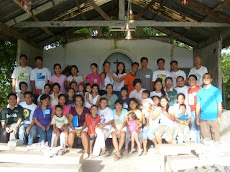Saint Lorenzo Ruiz
"Isa akong Katoliko at buong pusong tinatanggap ang kamatayan para sa Panginoon, kung ako man ay may sanlibong buhay, lahat ng iyon ay iaalay ko sa Kanya.("I am a Catholic and wholeheartedly accept death for the Lord; if I have a thousand lives, all of them I will offer to Him."
Protomartyr of the Philippines
Born
1600s, Binondo, Manila, Philippines
Died
29 September 1637, Nishizaka, Nagasaki, Japan
Venerated in
Roman Catholic Church
Beatified
18 February 1981, Manila, Philippines by Pope John Paul II
Canonized
18 October 1987, St. Peter's Basilica, Vatican City by Pope John Paul II
Major shrine
Basilica of San Lorenzo Ruiz, Binondo, Manila, Philippines
Feast
28 September
Attributes
rosary in clasped hands; martyr's palm; man hanging upside-down in pit
Patronage
Filipino youth, Chinese-Filipinos, the Philippines, Overseas Filipino Workers, people living in poverty.
Early life
Born in Binondo, Manila, Lorenzo Ruiz was of mixed Chinese and Filipino descent (mestizo). His Chinese father taught him Chinese, and his Filipino mother taught him Tagalog, the Filipino language. Both of his parents were Catholic.
Ruiz served as an altar boy at the convent of Binondo church. After being educated by the Dominican friars for a few years, Ruiz earned the title of escribano (calligrapher) because of his skillful hand and unsurpassed penmanship. He became a member of the Cofradia del Santissimo Rosario (Confraternity of the Rosary). In 1636, while working as a clerk at the Binondo Church, Ruiz was falsely accused of killing a Spaniard. Prior to this incident, his life with his Filipino wife, two sons and a daughter was peaceful, religious and full of contentment. But after the allegation, Ruiz sought asylum on board a ship with three Dominican priests: Saint Antonio Gonzalez; Saint Guillermo Courtet; Saint Miguel de Aozaraza, a Japanese priest; Saint Vicente Shiwozuka de la Cruz; and a layman named Saint Lazaro of Kyoto, a leper. Ruiz and his companions left for Japan on June 10, 1636 with the aid of the Dominican fathers and Fr. Domingo Gonzales.
Exile to Japan, arrest and torture
The boat landed at Okinawa and the group was arrested and persecuted because of their Christian religion. They were brought to Nagasaki on July 10, 1636. They were tortured through hanging by their feet, by submerging in water until near death, and by water torture. Needles were also inserted under their finger nails and they were beaten until unconscious. These methods made some of Ruiz's companions recant their faith, but Ruiz never did.
Martyrdom
A portrait of San Lorenzo Ruiz at the stairways of San Carlos Seminary, Makati City, Philippines.
On September 27, 1637, Ruiz and his companions were taken to the "Mountain of Martyrs", where they were hung upside down into a pit known as horca y hoya, or tsurushi. This mode of torture was considered as the most painful way to die at the time because it involved the use of rocks to add weight to the person being punished. The individual being tortured suffocated quickly while being crushed by his own weight. Two days after, Ruiz died from hemorrhage and suffocation. His body was cremated and his ashes were thrown into the sea.
Path to sainthood
Lorenzo Ruiz was beatified in Manila on February 18, 1981 by Pope John Paul II during his Papal visit to Manila, the first beatification ceremony held outside the Vatican. San Lorenzo Ruiz was elevated to Sainthood and canonized by Pope John Paul II in the Vatican City, Rome on October 18, 1987 making him the first Filipino saint and the first Filipino martyr.
Cathedral of Our Lady of the Angels
Lorenzo Ruiz's image is one of 135 saints and blessed from around the world in the Communion of Saints Tapestries hung inside the Cathedral of Our Lady of the Angels in Los Angeles by John Nava.
20th anniversary
On September 28, 2007, the Catholic Church celebrated the 20th anniversary of Ruiz’ canonization in 1987. Manila Archbishop Gaudencio Cardinal Rosales said: “Kahit saan nandoon ang mga Pilipino, ang katapatan sa Diyos ay dala-dala ng Pinoy (Wherever the Filipino may go, he carries his faith in God).”
Saturday, September 26, 2009
Subscribe to:
Post Comments (Atom)














No comments:
Post a Comment